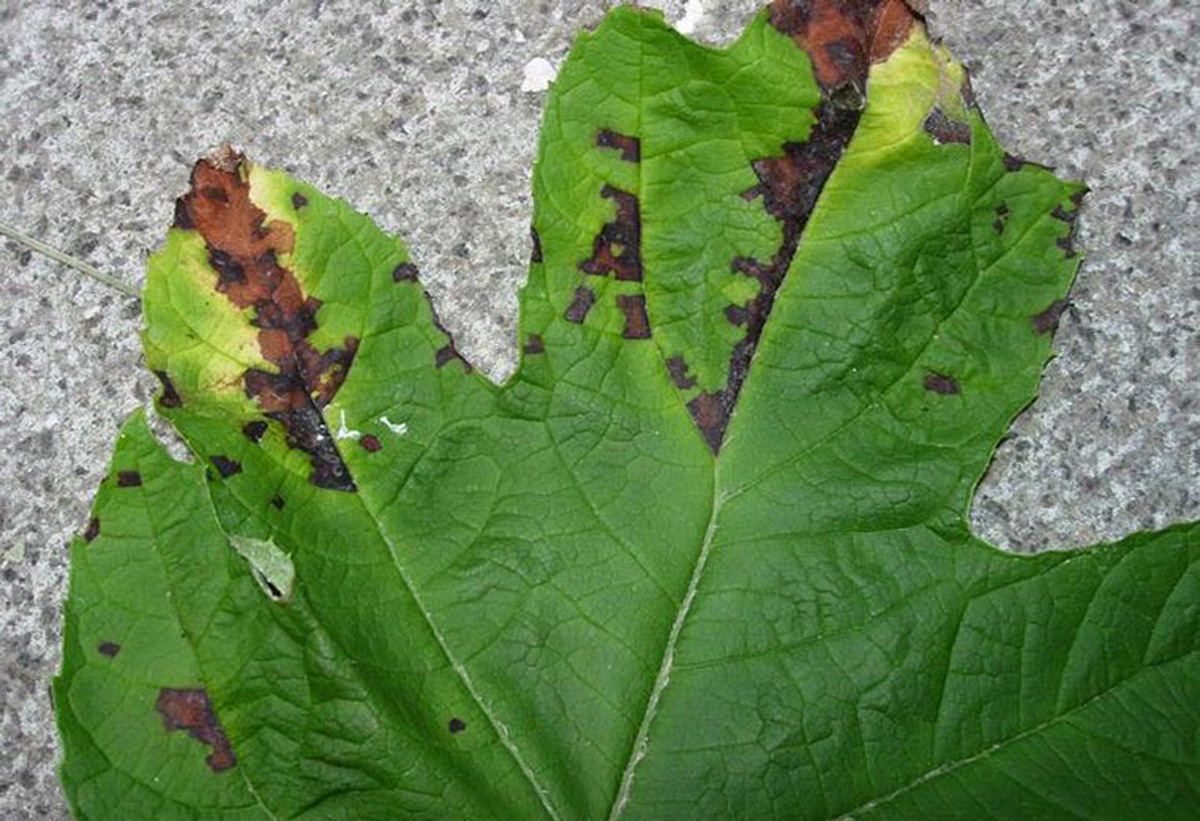
As one of the most popular flowering shrubs for the modern landscape, it is no surprise that we are now seeing more evidence of various diseases and insect damage on Hydrangea sp. It was once a plant rarely afflicted by pests, but extensive use in the landscape has created more opportunities for common pest problems.
Leaf Spot Diseases
Two common leaf spot diseases impact hydrangeas in similar ways but with diverse sources. In both cases, the plants benefit from removing diseased leaves from the area. Pruning also opens the plant and provides good air circulation, which can aid in keeping these problems under control. Diseased or infested sections of your plants should always be bagged and placed in the trash or burned if allowed, never composted. All pruning tools should be cleaned thoroughly and disinfected between plants.

Fungal leaf spot (Cercospora species and Phyllosticta hydrangea)
Yellowing leaves with circular spots, typically brown or purple, at the base of the plant can usually be attributed to one of two pathogens, both fungal diseases. Fungal leaf spots (Cercospora species and Phyllosticta hydrangea) can be prevented by keeping the leaves dry when watering. However, hot, humid weather and heavy rains cannot be prevented. Wet weather patterns create the perfect conditions for spreading these pathogens. If your plants become infected, treat them with a commercial fungicide containing Chlorothalonil, or use organic options. Compost tea, garlic oil, liquid kelp, and hydrogen peroxide are recommended as well as Neem Oil and sprays that contain Bacillus subtilis. With that said, this disease is cosmetic and will not kill the plant.

Bacterial leaf spot (Xanthomonas campestris)
A disease common to oakleaf hydrangea (Hydrangea quercifolia) is bacterial leaf spot (Xanthomonas campestris). Entering the plant through wounds and natural openings such as the stomata in leaves, purple or reddish-brown leaf spots appear in June, gradually changing to angular shapes, growing, and eventually killing the infected leaves. Wet, warm weather triggers its appearance. Starting at the bottom of the plant, splashing water spreads the pathogen upward. Treating the plant with copper hydroxide can provide some protection. Hydrangea arborescens and H. macrophylla can also be affected, but the disease has the greatest impact on oakleaf hydrangea.
Common Hydrangea Pests

Aphids
Aphids (Aphidoidea) do not spare hydrangea. Pinhead-sized, soft-bodied 1/8”-long insects that come in assorted colors, based on which of the 4,000 different species you have, Aphids can quickly cause enormous damage. Attacking in large groups, they prick the leaves and stems, sucking out the liquid, causing them to dry up and die. A sticky residue called honeydew is left behind. Honeydew is attractive to ants, so their swarming on your plants may be the first sign of aphid trouble. Control with a strong spray of water to dislodge the pests, then remove infested branches, or use an insecticidal soap. When aphids are out of control, the sticky honeydew can turn into a colony of sooty mold fungi (Capnodium citri) hitting you with twice the problems.

Scale
One of the worst afflictions for any plant is scale (Coccoidea). They are sneaky, taking up residence in spaces where you cannot see them until there are hundreds. A small ancient insect of over 8,000 distinct species that sucks on sap from the leaves and stems of plants, they may look like sap, bark, cotton, or mottling on a leaf from a distance. One of the most common found on hydrangeas is aptly named hydrangea scale (Pulvinaria hydrangeae), which has a cottony appearance. Females develop in two stages before becoming adults, resulting in two specific times that one can apply controls. Dormant and summer horticultural oils are used when the insect is in the crawling stage. Consult your local weather information or experts to determine the correct application time. A few soft insects can be sprayed with a 1:7 ratio of rubbing alcohol and water every 3 days until no insects remain. Removing the infested parts of the plant may be necessary if there are too many insects to treat otherwise.
One could author a book on all the possible pests awaiting to attack gardens every season. As the weather becomes more unpredictable, we will continue to face the challenge. Follow good sanitation practices, prune to keep our plants healthy, clean up debris regularly, water responsibly, and we will have a fighting chance.
For more information and strategies, check out:
- Pruning Hydrangeas
- How to Prune Hydrangea Bushes – Video
- How to Properly Sanitize Your Pruning Tools
- Controlling Scale, a Common Pest of Fruit Trees
- Do Your Plants Have Sticky Leaves? Honeydew Might Be the Problem
And for more Midwest regional reports, click here.
Marti Neely, FAPLD, owns and operates Marti Neely Design and Associates in Omaha, Nebraska.


















Comments
Log in or create an account to post a comment.
Sign up Log in